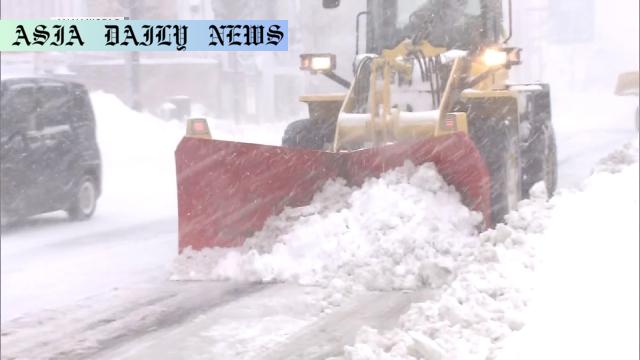Weather officials urge caution as a low-pressure system brings winds, heavy snow, and traffic disruptions to northern Japan.
Low-pressure system intensifies winds, heavy snow, and high waves across northern Japan.
Hokkaido and Tohoku region face windstorms, blizzards, and potential traffic disruptions.
Air travel severely affected with over 61 flights canceled, further disruptions anticipated.

Low-Pressure System Intensifies Across Hokkaido
A rapidly strengthening low-pressure system is currently wreaking havoc across northern Japan, bringing devastating weather conditions to Hokkaido and surrounding regions. The Japan Meteorological Agency has warned citizens about the potential dangers stemming from this weather event, including blizzards, strong winds, heavy snowfall, and high waves. In addition, residents in eastern Hokkaido are being cautioned about increased risks of flooding due to rising tides triggered by strong northerly winds.
Strong Winds and Heavy Snow Pose Severe Risks
As of Monday morning, wind speeds reached alarming levels in parts of Hokkaido. For instance, Cape Erimo experienced gusts of up to 147 kilometers per hour, while Nemuro City saw wind speeds nearing 100 kilometers per hour. The low-pressure system is expected to bring further heavy snowfall—up to 60 centimeters in Hokkaido and 40 centimeters in the neighboring Tohoku region by Tuesday morning. Such conditions are likely to result in snowdrifts and severely impair visibility, creating hazardous travel conditions for both commuters and emergency services.
Flight Disruptions Hit Northern Airports Hard
The storm has already caused widespread travel chaos. Airlines have reported significant disruptions, with 61 flights to and from Hokkaido canceled by 10 a.m. on Monday. Airports such as Nakashibetsu, Wakkanai, and Monbetsu have been the hardest hit, with no flights operating for the day. Early morning flights from other regional airports, including Kushiro and Obihiro, were also grounded. Airlines have urged passengers to stay updated with the latest travel information as further cancellations are expected.
Precautions and Safety Measures
Authorities are urging residents and travelers in northern Japan to exercise extreme caution during this period. Key recommendations include avoiding unnecessary travel and staying informed about weather updates. Emergency kits and warm clothing are essential in case of power outages caused by the harsh conditions. The public is also advised to be vigilant against potential flooding due to high tides, particularly in affected areas like eastern Hokkaido. Building resilience and awareness will be critical in ensuring people’s safety and minimizing any long-term damage caused by this intense weather system.



Commentary
Analyzing the Impact of Weather on Daily Life
The extreme weather conditions currently affecting northern Japan highlight the unpredictable and often severe impact of natural systems on daily life. With 61 flights already canceled, communities relying on air travel are facing significant inconveniences. This is a stark reminder that our modern infrastructure, while robust, remains vulnerable to the forces of nature. Planning and preparation are crucial for minimizing the effects of such events, and this situation underscores the importance of having adaptive contingency plans in place.
Climate and Regional Vulnerabilities
Hokkaido, known for its harsh winters and frequent snowstorms, remains particularly vulnerable to systems like the one currently sweeping across the region. It begs the question of whether enough is being done to prepare for these increasingly frequent weather events, which may be exacerbated by global climate change. The extensive travel disruptions and associated economic impacts also reflect the cascading effects that extreme weather can have on both local communities and larger regional networks.
The Need for Timely Communication
Effective communication during such crises cannot be overstated. The prompt updates from the Japan Meteorological Agency and regional authorities are undoubtedly mitigating risks by keeping the public informed. However, continuous improvement in how warnings and updates are relayed to the public is essential to ensure safety. Investing in technology that can predict, monitor, and communicate the scale and impact of these systems will be key to building better resilience in affected areas moving forward.